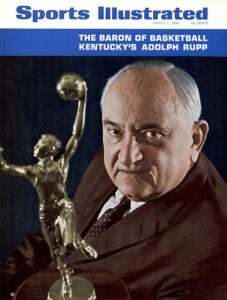
Los Angeles Kings power play fire on all cylinders against the Oilers
In the high-stakes environment of the Stanley Cup Playoffs, special teams often serve as the decisive factor between victory and defeat. The Los Angeles Kings’ power play has been a standout feature in their first-round series against the Edmonton Oilers, showcasing precision, adaptability, and a relentless drive that has left their opponents scrambling to find answers.
From the outset of the series, the Kings’ power play was a force to be reckoned with. In Game 1, they capitalized on four of their first six power-play opportunities, marking their first such performance since April 5, 2012 . This efficiency was not a mere anomaly but a continuation of a season-long trend where the Kings’ power play had been operating at a significantly higher rate than in previous years. Their ability to convert on the man advantage became a focal point of their offensive strategy, setting the tone for the series.
The individual performances on the power play have been nothing short of exceptional. Kevin Fiala emerged as a pivotal figure, contributing two goals and two assists in Game 1 alone. His quick release and ability to find open spaces in the offensive zone made him a constant threat during power plays. Adrian Kempe complemented Fiala’s efforts, also netting two power-play goals in the same game. The duo’s synergy on the ice was evident, with their quick puck movement and understanding of each other’s positioning creating numerous scoring opportunities.
Andrei Kuzmenko added to the offensive onslaught, scoring a power-play goal in Game 2. His presence on the ice during man-advantage situations provided the Kings with a dynamic option, as he consistently positioned himself to receive passes in high-danger areas. The combination of Fiala, Kempe, and Kuzmenko created a multifaceted power-play unit that was challenging for the Oilers to defend against.
The strategic deployment of the Kings’ power-play units also played a crucial role in their success. Coach Todd McLellan’s decision to utilize a 1-3-1 formation allowed for better puck circulation and more shooting lanes. This setup enabled players like Fiala and Kempe to exploit the Oilers’ penalty kill, which struggled to contain the Kings’ quick puck movement and shooting accuracy. The Kings’ ability to maintain possession and apply constant pressure during power plays kept the Oilers on their heels, often leading to defensive breakdowns and penalties.
In contrast, the Oilers’ power play, despite being one of the most potent in the league during the regular season, faltered under the Kings’ penalty kill pressure. Edmonton’s power-play unit, which had operated at a 31.0% success rate , was held scoreless in the early games of the series. The Kings’ penalty kill, employing a diamond formation, effectively neutralized the Oilers’ power-play threats. The disciplined positioning and aggressive puck pursuit by the Kings’ penalty killers disrupted the Oilers’ rhythm, forcing them into low-percentage shots and turnovers.
The disparity in special teams’ performance became a microcosm of the series. While the Kings capitalized on their power-play opportunities, the Oilers’ inability to do the same placed additional pressure on their even-strength play. The Kings’ success on the power play not only provided them with crucial goals but also shifted momentum in their favor, energizing their bench and demoralizing the Oilers.
As the series progressed, the Kings’ power play continued to be a decisive factor. In Game 2, they scored multiple power-play goals, further solidifying their dominance in special teams play. The Oilers, recognizing the impact of the Kings’ power play, attempted to adjust their penalty kill strategies but found little success in containing the Kings’ offensive prowess.
The Kings’ ability to perform under pressure, particularly on the power play, has been a testament to their preparation and execution. Their success in special teams has not only contributed to their series lead but has also set a standard for playoff hockey, where the ability to capitalize on power-play opportunities can often determine the outcome of a series.
In conclusion, the Los Angeles Kings’ power play has been a cornerstone of their success in the series against the Edmonton Oilers. Through strategic deployment, individual brilliance, and cohesive team play, the Kings have turned their power-play opportunities into game-changing moments. As the series moves forward, the Oilers will need to find a way to counter the Kings’ power-play effectiveness if they hope to turn the tide in their favor.





